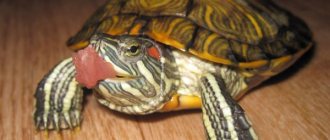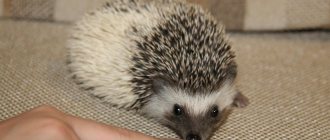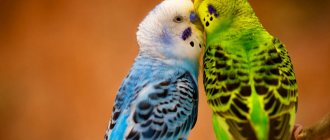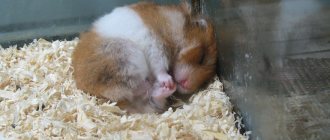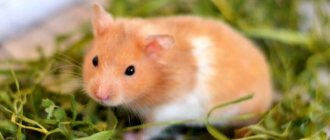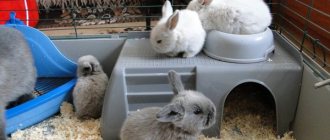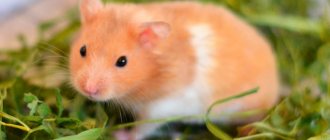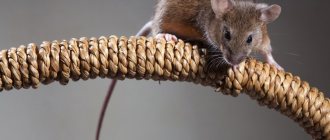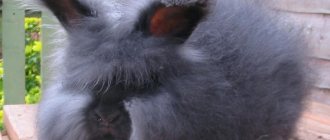Pet turtles are one of the most popular terrarium animals.
They are quite comfortable as a pet that every family member will love. There is an opinion that these reptiles are unpretentious in care. But in order for the animal to feel comfortable, be healthy and make you happy, you need to know as much as possible about it.
How to keep a turtle in the house? What do they like? How to create favorable conditions for caring for a turtle? In our article you will find all the necessary information.
Appearance
Turtles are one of the most ancient inhabitants of our planet. Due to the characteristic appearance, representatives of this family cannot be confused with any other reptile, however, they are characterized by a wide variety of species. The smallest land turtles have a shell only 11-12 cm long and a body weight of 100-150 g. Large species weigh half a ton or more, and their shell reaches truly gigantic sizes of 1-1.2 m.
Turtles have a small, streamlined head on a short neck, which allows them to immediately hide it in their shell in case of danger. There are no ears or auditory canals, but animals have good hearing thanks to the eardrum located directly on the surface of the head. On the sides there are eyes pointing downwards.
Turtles have a well-developed sense of color; their preferred colors are red and green.
There are no teeth, and the mouth is a beak with jagged edges, with which the turtle bites off food. A small tongue helps the animal when swallowing, but it is not long enough to protrude from the mouth.
The main distinguishing feature of turtles from other reptiles is their shell. It has 2 layers: bone and keratin.
Consists of two parts:
- carapace - dorsal shield, which is bone plates fused with the spine and ribs;
- plastron - an abdominal shield formed by the connection of the sternum, clavicles and abdominal ribs.
The shell can withstand a load 200 times greater than the weight of the turtle and serves as reliable protection for the animal.
The legs of land turtles have their own characteristics: the hind legs are column-shaped, the front ones are slightly flattened, adapted for digging holes. The tail is short. The color most often does not attract attention - yellowish-brown or olive-brown.
Behavior, communication, everyday situations (summer, dacha, children, etc.)
The vocal cords of red-eared turtles are not developed. At the moment of threat, out of fear, they are capable of emitting a hiss or a thin squeak. You should not suddenly lower your hand on the turtle, make noise or gesticulate violently: it will mistake you for a predator and may begin to “defend” in panic: hiss, stick out its claws, try to hide in its shell, or bite. You will have an instinctive desire to recoil from the head of the angry animal and withdraw your palm.
At the same time, you should also be wary of the turtle’s hind legs - they also have sharp claws, and in a moment of danger, the animal may try to hit or push away its source using its hind limbs. This is especially dangerous when being carried or transported: if pushed, the turtle may fall to the floor and be injured. Therefore, do not trust a child who is too young to carry turtles from place to place for feeding or cleaning the terrarium.
The best way to let your pet breathe in the fresh summer air and bask in the sun is to place the terrarium outside. However, avoid direct sunlight so as not to overheat the animal, and also carefully monitor the terrarium so that it has some kind of lid or tightly closed lattice on top so that neither birds of prey nor dogs can get to the turtle. And it is better that such a “walk” takes place under your supervision.
In the warm summer, the diet of the red-eared turtle can be diversified with fresh dandelion leaves or lettuce, but only in small pieces, as a treat, without “breaking” its diet in order to avoid digestive disorders.
Range and habitat
Land turtles are found in almost all parts of the world: Europe, Asia, Africa, America. They have adapted to life in deserts and steppes, savannas and even tropical rainforests. Their favorite habitats are low hills and small rocky formations. They prefer sandy and loamy soils, which they can dig with their strong clawed paws.
To live, turtles arrange secluded places for themselves, protected from the scorching sun. For this purpose, they often use old burrows dug by other animals.
Aggression towards relatives
An aquarium for red-eared turtles is comparable to a small pond, where they are able to demonstrate an aggressive and dominant attitude towards other inhabitants. They can hurt other animals with their claws and teeth. Some males get into fights with females, which often leads to their tails being bitten off and subsequently to death. A new individual in the aquarium provokes aggression from old, mature turtles.
If you encounter this kind of behavior between conspecifics, it is best to try increasing the space in the aquarium or adding barriers between the animals. This behavior is acceptable in the wild. However, it is best to keep the red-eared slider in a separate aquarium.
How long do land turtles live?
The lifespan of turtles living in the wild and at home varies and depends on the type of reptile. In their natural environment, land turtles live 50–100 years, with individuals of some species reaching an age of 200 years.
Larger turtles live longer than smaller ones.
The lifespan of turtles at home directly depends on care, feeding and living conditions. On average it is 20 – 25 years. But if the rules of care and maintenance are followed, a turtle can live from 30 to 50 years.
Epilogue
This article discusses the general rules for keeping red-eared turtles, which are suitable for all three subspecies.
Before getting a turtle, carefully weigh the pros and cons and think about whether you can provide the necessary conditions for keeping your pet healthy and not in need of veterinary care.
Remember: it is always cheaper and easier to properly maintain an exotic pet than to treat diseases that can be extremely dangerous in reptiles, particularly turtles.
Varieties
Land turtles are a fairly large family of the turtle order, which includes 16 genera and about 50 species. Among those living on land, the following are the most popular and well known.
Central Asian steppe tortoise
The turtle has a yellowish-brown color with fuzzy dark spots. The shell is low and round in shape, measuring 15–20 cm. There are 4 toes on the forelimbs. Puberty occurs at 10 years of age. Distribution area: countries of Central Asia, Iran, India, Afghanistan. This is the most popular type for keeping at home. With good care they can live for 30 years or more.
Mediterranean turtle
Other names: Caucasian, Greek. The color palette of the carapace contains olive, yellow and brown, and black spotty inclusions may be observed. The shell is high, the size of an adult turtle is 28 – 35 cm.
Distribution area: Southern Europe, South-West Asia, North Africa. Suitable for home use. It is best to buy an adult, as young turtles do not tolerate relocation well.
Land leopard (panther) tortoise
The turtle is sandy yellow in color with a dark brown spotted pattern. True to its name, its color resembles that of a leopard. The turtle is quite large, 70–80 cm, with a dome-shaped shell.
Distribution area: Africa. For this species, the terrarium must have a pond. Lives at home for 50 years or more. It eats only grass.
Egyptian land tortoise
It has a yellow-brown color. One of the smallest of the land turtles. The size of males does not exceed 10–12 cm, females are slightly larger.
Distribution area: Middle East and North Africa. When kept at home, the temperature in the terrarium should not fall below +24–25°C. In case of danger, the turtle quickly buries itself in the sand.
Balkan tortoise
The turtle's shell is yellow-brown with black spots on it. The carapace dimensions are 15–20 cm. This species has a long tail with a conical spike at the end.
Distribution area: Southern Europe. Life expectancy in natural conditions exceeds the 90-year mark.
Star turtle
A very beautiful turtle. The color of the carapace is dark brown or almost black, on which there are star-shaped spots of yellow color. The carapace is strongly convex, oval in shape, 15–25 cm long.
Distribution area: India, Sri Lanka, Pakistan. Suitable for keeping in captivity, will decorate any terrarium, life expectancy is 80 years.
Elephant (Galapagos) tortoise
The largest of the land turtles, its length reaches 180 cm, and its weight is 400 kg or more. They live more than 150 years, including in captivity. The brown-black shell of turtles living in highlands is dome-shaped, while that of turtles living in lowlands is saddle-shaped.
Distribution area: Galapagos Islands.
Reproduction of turtles
The mating season for land turtles, depending on the species and location, occurs at different times. The main sign of the beginning of mating games in natural conditions is fights between males. Males try to use blows with their shells to turn over the opponent or put him to flight. After this, the process of courtship begins with the female, ending with mating and subsequent laying of eggs. Males become sexually mature at the age of 6 years, females at 10 years.
A pregnant female lays eggs near bodies of water. For laying, she digs a hole in the sand, uses her holes or crocodiles' nests. The turtle covers the laid eggs with sand or earth and carefully compacts them with the plastron (the lower part of the shell).
The number of eggs in a clutch varies greatly among different species, from 1 to 200 pieces. Turtle eggs are white and have a spherical or ellipsoidal shape. The incubation period for egg development lasts about 3 months; in giant species it increases to 6-7 months.
Female turtles of some species are capable of laying several clutches without additional mating. Under unfavorable conditions, a turtle can inhibit the development of an embryo for several weeks.
Turtles have absolutely no maternal instinct, and after laying eggs they show no interest in them (the exception is the brown turtle).
The sex of the turtles depends on the temperature of the egg during the incubation period. At low temperatures, males hatch; at high temperatures, females hatch.
Breeding turtles at home is quite difficult. If certain conditions are created, mating can take place at any time of the year.
During the mating period, turtles require good nutrition, lighting and maintaining a temperature of at least +25°C. Most often, one male is placed with two females.
A fertilized female can be identified by external signs: she becomes restless and tries to fence off space for herself. For a pregnant female, calcium must be added to her food. The laid eggs are placed in an incubator. Hatched cubs are kept separately from adults to avoid injury.
What not to do during communication
If the owner does not want to lose contact with the pet, he should not turn it upside down.
In the wild, a reptile turns over on its back and dies unless other animals come to its aid. They are often rescued by elephants - if they are large individuals - or other turtles. The animal will not be able to assume its usual position on its own and will die of starvation.
Therefore, the instinct of self-preservation with such a radical change in body position signals mortal danger.
A person will never be able to accustom a reptile to such a “trick” - he will only turn the creature against himself. And then it will be impossible to establish contact: the animal’s memory will always be on guard: “You can expect death from this person!”
Do not tap the shell with a fingernail or pen. For an animal, such actions are equivalent to how a person would be knocked on the head. It's unpleasant and stressful.
What do turtles eat in the wild?
Land turtles are herbivores. Under natural conditions, their food is grass, young bushes, berries and fruits. Turtles obtain the protein they need for life by eating snails, worms, slugs, and other small insects.
Turtles obtain the water they need for life by eating the succulent parts of plants. But if there is a water source nearby, the turtle will not miss the opportunity to drink, especially in hot weather. If there is no vegetation in the turtles' habitats, they hibernate. They emerge from it when grass appears on the surface of the soil.
Hibernation
The winter period is characterized by hibernation for red-eared turtles. However, this is a characteristic phenomenon for individuals that live in captivity. This should not be allowed in a home atmosphere. There are a number of reasons why hibernation is contraindicated for turtles. A number of them:
- Lack of information on how to monitor and maintain a stable condition of the turtle;
- Lack of suitable conditions for hibernation;
- Many small and sick turtles do not survive the hibernation period.
In captivity, red-eared turtles burrow under bushes and mud near bodies of water with shallow depths. Oxygen is absorbed through the openings of the mouth, pharynx and cloaca. The temperature regime of the reservoir is important, as well as the presence of an acceptable amount of oxygen in the water for safe hibernation. In order to invigorate the turtle, you need to keep the water temperature at least 26 degrees Celsius, since low temperatures contribute to hibernation.
Keeping at home
For a turtle to live comfortably in a city apartment, it is important to create conditions close to its natural habitat. This is not difficult to do, but there are several features and requirements for the equipment of the turtle’s future habitat.
Equipment for the turtle's habitat
- Terrarium or aquarium . The size depends on the type of turtle. With its size of 12 cm, the minimum dimensions of the terrarium are 60x40x40 cm. It is better to choose a place of detention that is 5 - 6 times larger than the size of the turtle. If there are cats or dogs in the house, you need to choose a terrarium with a top lid.
- Ultraviolet lamp . Provides vitamin D, which affects calcium absorption. The deficiency of which leads to brittle bones and softening of the shell.
- Incandescent lamp . Necessary for lighting and heating. When installed in a terrarium, there should be warmer areas with a temperature of +30-35°C, and less heated areas with a temperature of +24-27°C.
- Thermometer . Used to control temperature conditions. For safety reasons, it is better to purchase alcohol devices.
- Soil (bottom covering) . The best options would be large pebbles or gravel; you can use a special substrate, hay or sawdust. It is undesirable to use sand, as the turtle may swallow it, which will lead to illness in the animal.
- House . Under natural conditions, turtles make their own shelters. In the terrarium they are replaced by a house. It is better if it is made of easily washable materials: ceramics, durable plastic. It should be located on the opposite side of the heating lamp.
- Feeder . Small in volume, stable container. It is not recommended to place it under a lamp.
- Drinking bowl . The preferred option is a low, large, heavy container. The greater weight will prevent the drinker from tipping over, and the low height of the sides will allow the turtle to reach the water without effort.
Features of care and maintenance
- Nutrition . The turtle should be fed once a day; adults are allowed every other day. In the turtle’s diet, greens (salads, sorrel, dandelions, clover, other grass) should make up 70-80%, fruits, vegetables and berries (strawberries, apples, apricots, watermelon, zucchini, cucumbers, bell peppers) 20-30%, periodically Vitamins and calcium must be added to food.
- UV irradiation . To maintain health, turtles need to turn on the UV lamp for at least 3-4 hours. The most optimal mode would be to operate the lamp during daylight hours.
- Temperature regime . The optimal temperature in the terrarium should vary from +21 to +35°C. If at night the temperature drops below +20°C, it is necessary to additionally equip the terrarium with an infrared lamp.
- Bathing . When kept at home, land turtles need to be bathed, and they really enjoy this procedure. It is carried out at least once a week. The water temperature should be +25-30°C. The water level should not exceed half the height of the shell. The bathing time is no more than 30 minutes, after which the turtle needs to be wiped dry with a towel and placed under a lamp.
- Care of claws and beak . Turtles should have their claws shortened if they cannot be sharpened at home. This is done using a file, scissors or nippers. The growths on the beak are not cut off, but broken off in small pieces. To avoid injury to the turtle, these operations are best performed in a veterinary clinic.
- Cleaning . The feeder and drinker are washed daily. The aquarium filler, if it cannot be washed (sawdust), is changed as it becomes dirty - 1-2 times a week. The house, large stones, and the terrarium itself are washed once a week.
How to choose a feeder
A feeder for a land turtle is a ceramic or plastic container where you can conveniently place chopped vegetables and herbs. Such a feeder should be shallow; it is better to choose a flat and wide model so that the turtle can climb into it entirely.
An interesting solution would be to install a feeder that imitates natural stone or driftwood - it will perform an additional decorative function in the terrarium.
Aquatic turtles are carnivores, so their meals leave behind much more biohazardous waste. Decaying pieces of protein food pollute the water of the aquaterrarium and become a source of unpleasant odor. Therefore, the feeder for red-eared turtles is usually a separate container where water is collected. The animal is moved into such a tank before feeding; after a meal, it is enough to pour out the contaminated water and rinse the walls. For feeding on land, it is recommended to install the same model as for land turtles.
IMPORTANT: If a special substrate is used for feeding, you can install an automatic feeder. Such products are sold in pet stores and are quite expensive, but they allow you to set feeding intervals and portion sizes.
An automatic feeder is indispensable when leaving for several days, when there is no one to entrust with caring for the turtle.
Automatic feeder
Interesting facts about turtles
- Ancient Greek coins found contain images of turtles.
- Long before the invention of canned food, sailors used hibernating turtles for this very purpose.
- The image of these reptiles is used on the coats of arms of cities and settlements in Lithuania, Spain, and Germany.
- The Turtles became the first “cosmonauts” to fly around the Moon and return to earth on the Soviet Zond 5 spacecraft in 1968.
- In case of danger, turtles use an unusual method of protection - they suddenly empty their bladder.
Among the representatives of a large order of turtles, it is the land ones that are the preferred type for home keeping. They easily adapt to a new habitat and are unpretentious in care. Knowing everything about keeping a land turtle, including descriptions and characteristics of the species, natural habitat, life expectancy, nutrition and care, it is easy to organize a comfortable life for your pet.

